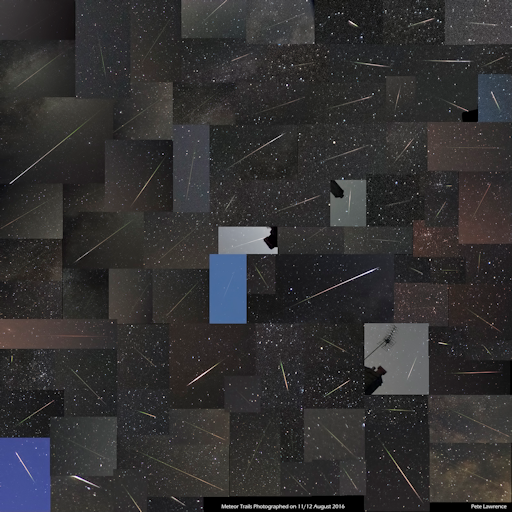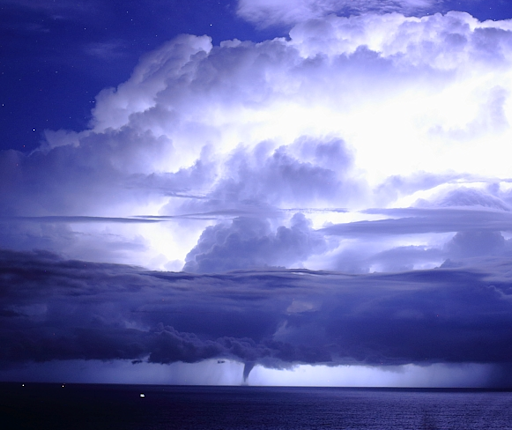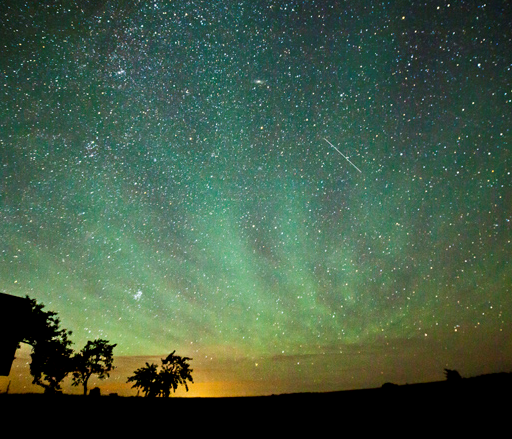Directly under the Arctic Circle! Marianne's Arctic Xpress in Tromsø offers fjord, whale and wildlife tours by day, aurora tours by night. Book Now and get a 10% discount on combo day and night adventures. | | | PERSEID METEOR SHOWER--UPDATE: Yes, there was a Perseid outburst on Aug. 11-12. Maybe two. Reporting via the Central Bureau of Astronomical Telegrams, Peter Jenniskens of the SETI Institute writes that "predicted encounters with the 1-revolution and 4-revolution dust trails of comet 109P/Swift-Tuttle were observed on Aug. 12" with peak rates as high as 190 meteors per hour. Preliminary data from the International Meteor Organization (IMO) Video Network suggest that the two dust trails merged into a nearly single peak not much more than ~1 hour long on Aug. 11th around 23:00 UT. A second broader outburst, well placed for US observers, peaked 8 hours later. Check the full telegram for details. During the first outburst, which favored Europe and Asia, Peter Lawrence photographed dozens of Perseids from his backyard in Selsey, West Sussex, UK: 
"I set up four cameras," he says. "In total, they captured 88 Perseid meteor trails." With so many meteors flying across the skies of Europe, photographers were tempted to try some unique shots. Olivier Staiger drove 700 miles from Switzerland to Italy to catch Perseids flying above this waterspout in the Adriatic Sea: 
Using two cameras, one trained on the lightning-bright thunderhead and another on the dark starry sky above, he scanned the scene for more than 5 hours. "I saw many meteors flying overhead but never managed to record a perfect Perseid-waterspout conjunction," says Staiger. "Maybe next time." The Perseid Photo Gallery contains more unusual meteor shots. Many of them show a green glow in the night sky, like this: 
Janis Satrovskis took the picture on Aug. 11th from Burtnieki, Valmiera, Latvia. "The green airglow provided a beautiful backdrop for the meteor shower," says Satrovskis. Airglow is aurora-like phenomenon caused by chemical reactions in the upper atmosphere. Human eyes seldom notice the faint glow, but It can be photographed on almost any clear dark night, anywhere in the world. The source of the green light is oxygen atoms some 90 km to 100 km above Earth's surface where gravity waves impress the verdant glow with a dramatic rippling structure. Realtime Perseid Photo Gallery
Realtime Space Weather Photo Gallery
Realtime Sprite Photo Gallery
Realtime Aurora Photo Gallery
Every night, a network of NASA all-sky cameras scans the skies above the United States for meteoritic fireballs. Automated software maintained by NASA's Meteoroid Environment Office calculates their orbits, velocity, penetration depth in Earth's atmosphere and many other characteristics. Daily results are presented here on Spaceweather.com. On Aug. 13, 2016, the network reported 184 fireballs.
(106 Perseids, 74 sporadics, 2 , 1 Southern iota Aquariid, 1 Northern delta Aquariid)  In this diagram of the inner solar system, all of the fireball orbits intersect at a single point--Earth. The orbits are color-coded by velocity, from slow (red) to fast (blue). [Larger image] [movies] Potentially Hazardous Asteroids ( PHAs) are space rocks larger than approximately 100m that can come closer to Earth than 0.05 AU. None of the known PHAs is on a collision course with our planet, although astronomers are finding new ones all the time. On August 13, 2016 there were potentially hazardous asteroids. Notes: LD means "Lunar Distance." 1 LD = 384,401 km, the distance between Earth and the Moon. 1 LD also equals 0.00256 AU. MAG is the visual magnitude of the asteroid on the date of closest approach. | | Cosmic Rays in the Atmosphere | | Situation Report -- Oct. 30, 2015 | Stratospheric Radiation (+37o N) | | Cosmic ray levels are elevated (+6.1% above the Space Age median). The trend is flat. Cosmic ray levels have increased +0% in the past month. | | Sept. 06: 4.14 uSv/hr (414 uRad/hr) | | Sept. 12: 4.09 uSv/hr (409 uRad/hr) | | Sept. 23: 4.12 uSv/hr (412 uRad/hr) | | Sept. 25: 4.16 uSv/hr (416 uRad/hr) | | Sept. 27: 4.13 uSv/hr (413 uRad/hr) | | Oct. 11: 4.02 uSv/hr (402 uRad/hr) | | Oct. 22: 4.11 uSv/hr (411 uRad/hr) | These measurements are based on regular space weather balloon flights: learn more. Approximately once a week, Spaceweather.com and the students of Earth to Sky Calculus fly "space weather balloons" to the stratosphere over California. These balloons are equipped with radiation sensors that detect cosmic rays, a surprisingly "down to Earth" form of space weather. Cosmic rays can seed clouds, trigger lightning, and penetrate commercial airplanes. Our measurements show that someone flying back and forth across the continental USA, just once, can absorb as much ionizing radiation as 2 to 5 dental X-rays. For example, here is the data from a flight on Oct. 22, 2015: 
Radiation levels peak at the entrance to the stratosphere in a broad region called the "Pfotzer Maximum." This peak is named after physicist George Pfotzer who discovered it using balloons and Geiger tubes in the 1930s. Radiation levels there are more than 80x sea level. Note that the bottom of the Pfotzer Maximim is near 55,000 ft. This means that some high-flying aircraft are not far from the zone of maximum radiation. Indeed, according to the Oct 22th measurements, a plane flying at 45,000 feet is exposed to 2.79 uSv/hr. At that rate, a passenger would absorb about one dental X-ray's worth of radiation in about 5 hours. The radiation sensors onboard our helium balloons detect X-rays and gamma-rays in the energy range 10 keV to 20 MeV. These energies span the range of medical X-ray machines and airport security scanners. | | The official U.S. government space weather bureau | | | The first place to look for information about sundogs, pillars, rainbows and related phenomena. | | | Researchers call it a "Hubble for the sun." SDO is the most advanced solar observatory ever. | | | 3D views of the sun from NASA's Solar and Terrestrial Relations Observatory | | | Realtime and archival images of the Sun from SOHO. | | | from the NOAA Space Environment Center | | | a proud supporter of science education and Spaceweather.com | | | the underlying science of space weather |  | Tobi -- Proud Supporter of Space Education! |  | Claim your tax refund with this UK tax rebate company and get back your overpaid tax. |  | Enjoy this fabulous range of leather sofas from a leader in the UK sofa manufacturer industry.. | | 
